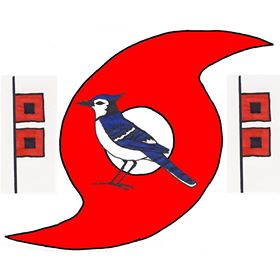Tropical Cyclone Dikeledi hit northern Mozambique on Monday morning. At 7:00 a.m. EST on Monday the center of Tropical Cyclone Dikeledi was located at latitude 15.1°S and longitude 40.6°E which put the center about 30 miles (50 km) south of Nacala, Mozambique. Dikeledi was moving toward the west-southwest at 18 m.p.h. (30 km/h). The maximum sustained wind speed was 80 m.p.h. (130 km/h) and there were wind gusts to 100 m.p.h. (160 km/h). The minimum surface pressure was 982 mb.
Tropical Cyclone Dikeledi hit the coast of northern Mozambique just to the south of Nacala on Monday morning. Dikeledi was the equivalent of a hurricane/typhoon at the time the center made landfall. A small circular eye was present at the center of Dikeledi’s circulation. The eye was surrounded by a ring of thunderstorms and the strongest winds were occurring in that ring of storms. Bands of showers and thunderstorms were revolving around the center of Tropical Cyclone Dikeledi.
The circulation around Tropical Cyclone Dikeledi was relatively small. Winds to hurricane/typhoon force extended out 35 miles (55 km) from the center of Dikeledi’s circulation. Winds to tropical storm force extended out 70 miles (110 km) from the center of Tropical Cyclone Dikeledi.
The Hurricane Intensity Index (HII) for Tropical Cyclone Dikeledi is 11.5. The Hurricane Size Index (HSI) is 8.5 and the Hurricane Wind Intensity Size Index (HWISI) is 20.0. Tropical Cyclone Dikeledi is similar in size to Hurricane Isaias when Isaias hit North Carolina in 2020. Dikeledi is not as strong as Isaias was.
Tropical Cyclone Dikeledi will move around the western end of a high pressure system over the South Indian Ocean. The high pressure system will steer Dikeledi toward the southwest during the next 24 hours. On its anticipated track, Tropical Cyclone Dikeledi will move along the coast of northern Mozambique during the next 24hours.
The center of Tropical Cyclone Dikeledi will be just inland along the coast of northern Mozambique south of Nacala during the next 24 hours. Dikeledi will bring strong winds and heavy rain to the coast of Mozambique. Heavy rain is likely to cause flash floods in some locations. Dikeledi could cause a storm surge of up to 7 feet (2 meters) along the coast of northern Mozambique. Tropical Cyclone Dikeledi could move back over the Mozambique Channel later this week.
